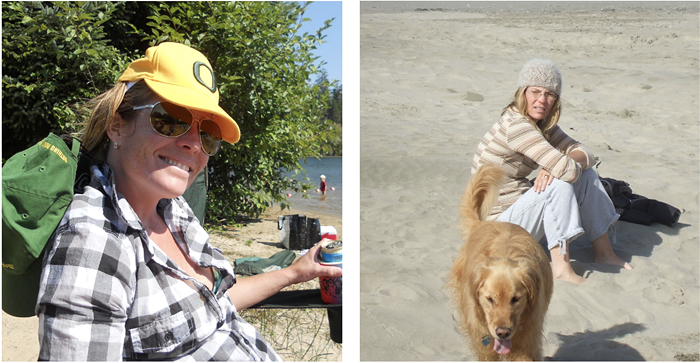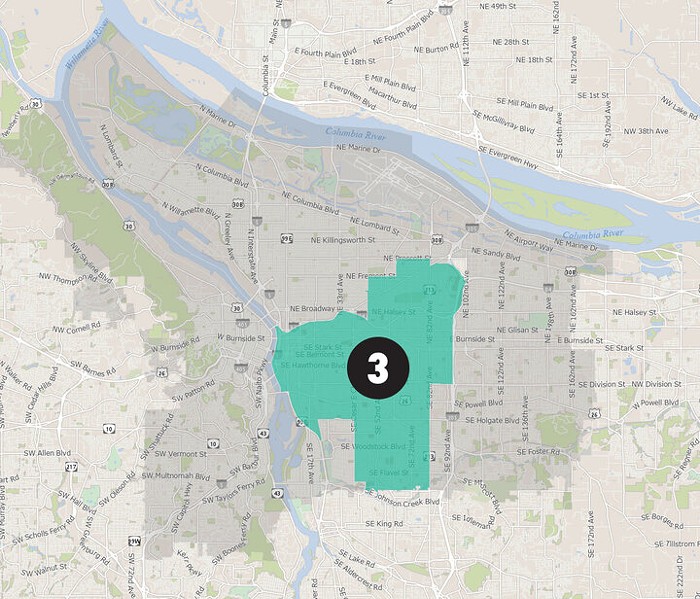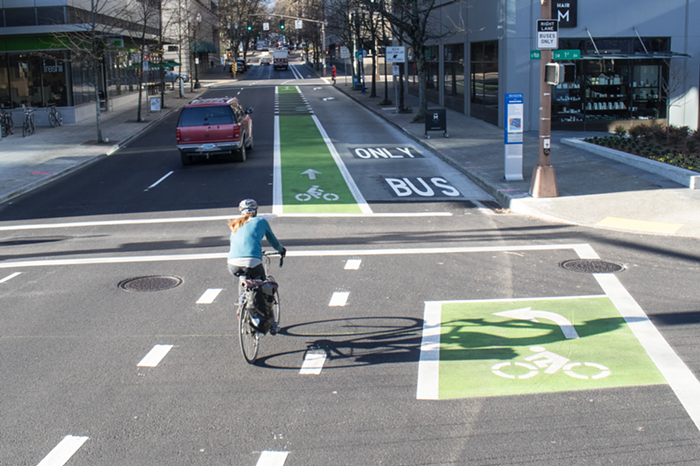One week after the Portland Police Bureau's first shooting of the year, all that's left at the scene—on NE 64th, just south of Alameda—is a scar on the side of a stubby, gnarled tree.
That's where Dennis Lamar Young—driving a stolen Oldsmobile Cutlass—ran into the tree before dawn on Wednesday, January 4. Moments later, after 28-year-old Young put his car in reverse, and headed toward Portland Police Lt. Jeffrey M. Kaer and Officer Lawrence Keller, Kaer shot at the car. Keller pulled out his Taser and jolted the wounded Young—then pulled him out of the car and performed CPR. Young died at the scene.
The incident started out as an ordinary one. Kaer's sister called him around 2 am about a suspicious car parked in front of her house. Kaer, on duty that night in the Southeast Precinct, offered to swing by and check it out.
According to police spokesperson Sgt. Brian Schmautz, Kaer pulled up behind Young's car—which was parked on the wrong side of the street, and jutting into the narrow residential road—and saw that Young was unconscious or asleep. Kaer called for backup and opened the car door to shake Young awake.
"He comes to, and the lieutenant is trying to put a control hold on him, and [Young] becomes combative," Schmautz says. That's when Young drove forward, and crashed into the tree. "He immediately guns it and goes back the way he came," toward the officers, Schmautz says. Kaer shot at the car twice. One bullet struck Young.
The shooting is currently under investigation. The district attorney will take the case to a closed-door grand jury to determine if either officer violated any law. Then the Portland Police Bureau (PPB) will conduct an internal affairs investigation to determine if bureau policies and procedures were followed.
A new police policy will likely be under the microscope during this investigation, says Dan Handelman of Portland Copwatch. The bureau's Deadly Physical Force policy was revised last year in regard to moving vehicles; the policy now says, "a moving vehicle itself shall not presumptively constitute a threat that justifies the member's use of deadly physical force." In other words, a moving vehicle isn't enough of a threat to shoot. PPB members are not supposed to shoot at a moving vehicle unless there's an "active threat" of death or serious injury by a person in the vehicle, using another weapon.
"Officers can't shoot at moving vehicles," Handelman reiterates. "They can create uncontrolled missiles," if the driver is incapacitated. Officers are supposed to get out of the way of a moving vehicle instead of shooting at it or its passengers. "It sounds like [the officers] could have gotten out of the way, so they may have been in violation of that policy."
Handelman is also concerned that the second officer, Keller, used a Taser on Young after he'd been shot. "This is at least the fourth case that we know of where they Tasered someone after they shot them," he says. "The person's already mortally wounded, why put 50,000 volts in their body?"
Despite the issues surrounding the shooting, there hasn't been the sort of uproar or protest that has followed other PPB shootings, like those of Kendra James in 2003 or James Jahar Perez in 2004. Critics have pointed out that James and Perez were black and Young was white, which has perhaps quelled outrage usually fueled by suspicions of racism. Moreover, Young was on post-prison supervision for auto theft, had a parole violation warrant, and was in a stolen vehicle—he's hardly an innocent victim (though none of those crimes warrant capital punishment). Finally, there are few, if any, independent witnesses to the early morning incident to contradict or question the cops' account.
"It's probably going to be a pretty quick case, with the officers' word against the dead guy," Handelman says.


















